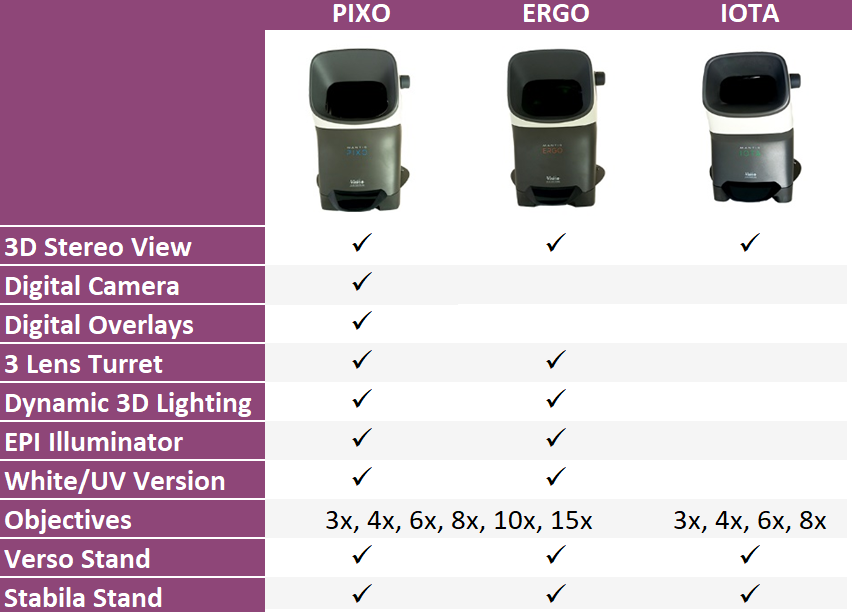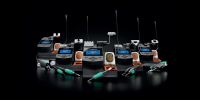
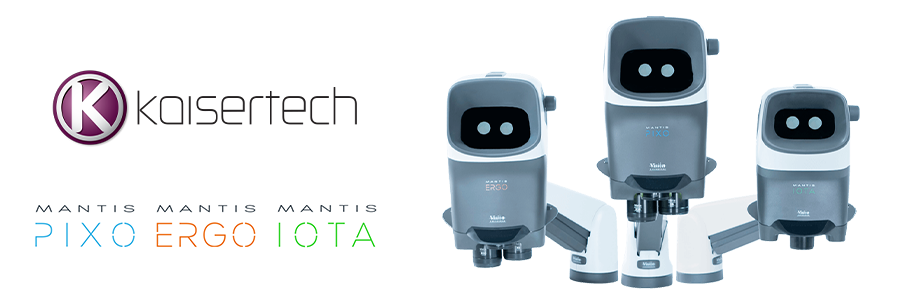

It has been almost a month since Vision Engineering dropped the new generation of the Mantis family.
There has been much hype and anticipation regarding how Vision has improved its flagship microscope. From what was already a market leader, Vision have further enhanced the Mantis, setting it stratospheres above anything else you can currently pick up on the market.
Take a read below of the key improvements and upgrades that the new Mantis generation offers over the Mantis Classic range.
New Models
Before we jump into what the key upgrades are of the new Mantis, let’s break down the models.
The new generation of the Mantis comes with 3 new models, called the PIXO, ERGO & IOTA.
These new models are completely new products in their own right, keeping the best features of the Mantis Classic range and including some very welcome upgrades.
See a breakdown of the features below:
Illumination Improvements
One of the first most apparent upgrades on the Mantis series is the better illumination that the 3 systems provide when compared to the older iterations.
Overall, the systems can provide more light, giving the user better control of how to direct the illumination they need on their subject.
The lighting on the Mantis systems are provided by two banks of LEDs housed to the left and right of the objectives. These can be individually controlled easily through control toggles on either side of the head.
The mantis now features 5 different illumination modes, giving the user maximum control over the lighting on their subject.
This means that the user can achieve the optimum shadow-free illumination for their subject, presenting the best quality view for both inspection and manipulation tasks. Some of these require optional additions to the set-up as they are not included as standard.
These different illumination modes are as follows:


Dynamic 3D Illumination – This was explained above, with the 2 banks of independently controlled LEDs. This gives complete control over the amount of light from each side of the subject.
Transmitted Illumination – If you are working with transparent, translucent or perforated subjects, the best way to get an accurate inspection is by providing light from below. This comes as an option with the Stabila stand (more info below), which has an optional built-in sub-stage illuminator.
EPI Illumination – The EPI illuminator for the Mantis has been drastically improved, offering far greater lighting. This is ideal for providing illumination between tightly packed components or to see the bottom of holes.
White/UV – The user can effortlessly switch between both white and UV lighting, at the touch of a button. This speeds up inspections for coating and fluorescing agents.
Contrast Enhancing Lighting – Plastic, glass, and other biological samples are low-contrast subjects. With the contrast enhancing base the user will benefit from adjusting shutter, illumination angle and light intensity of the subject. This highlights the edges and other key details of the subjects.
All of this gives the user far greater control over the detail on the subject, enhancing the 3D view they see and highlighting it in greater detail!
| Summary Of Illumination Improvements: |
| Surface illumination is 150% brighter |
| There are now 25 steps of control (from zero to maximum brightness) |
| Independent control of the right and left LED banks |
| 5 ways to illuminate your subject |
Dynamic Viewing Optics (DVO)
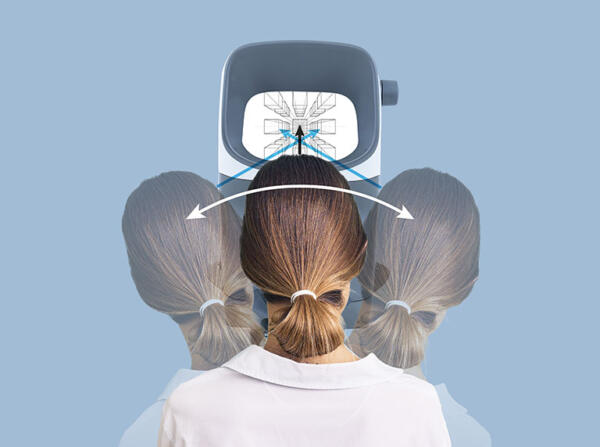

Experiencing this addition is essential to grasp the full extent of its impressive nature – a new feature that truly stands out
The Mantis provides a large clear image of the subject, with the operator being free to move their heads from side to side and still view the subject in its entirety.
But you can do this with the Mantis Compact, Elite & Elite CAM HD I hear you say…
Well, what really sets the PIXO, ERGO & IOTA apart is the ability to look around the subject whilst your head moves, rather than just straight down onto the subject.
(This is visualised in the image below)
This dynamic view gives an improved visual understanding of the subjects, meaning that you can view the sides of the subject and therefore gain a greater level of detail than any traditional microscope.
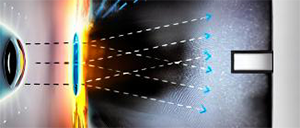

| In Summary, DVO provides: |
| A 3D view of the subject, unlike anything on the market. |
| Greatly enhanced depth perception for the user. |
| A viewpoint of both sides of the subject, as well as the top. |
Larger Field Of View & Larger Exit Pupil
Right from the off, you will notice that the field of view is bigger compared to the Mantis Classic.
In actual fact, it is approximately 10% larger. With this increase, you get far better control over your movements when working under the system.
This improved hand-eye co-ordination is also helped by the fact that the exit pupil size has also been increased.
The exit pupil is now 10 times larger than binocular systems. Ultimately this leads to far greater freedom of head movement.
| This Provides The Benefit Of: |
| Average ~5% increase in FOV diameter |
| Average ~10% increase in overall FOV |
| Average ~5% increase in diameter through the range of objectives |
| Average ~10% increase in FOV area over the range |
Huge Camera Improvements
Something that a lot of Mantis Elite CAM HD users have been hoping for, was an improvement to the digital capabilities.
With the Mantis PIXO, you certainly have that in abundance.
The PIXO benefits from having a 5MP camera installed (far superior to the 2MP camera on the Mantis Elite CAM HD). This provides superior image quality, greater colour reproduction and an improved frame rate of 48 fps. This yields consistent results with each use.
As standard the Mantis PIXO comes with the ViCapture software that allows the user to take advantage of the capture, review, and sharing capabilities.
This therefore provides:
- Superior image and video capture
- Faster comparisons with digital overlays
- Makes it easier to report and mark up
- Large display training and collaboration
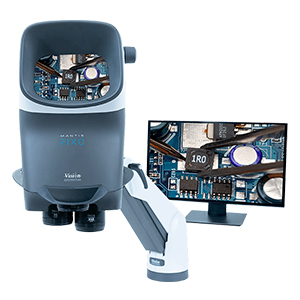

| Summary Of Video Improvements: |
| Higher resolution camera – upgraded from 2MP to 5MP |
| Greater colour reproduction |
| Improved frame rate – increased from 18fps to 48fps |
Stand Improvements
The final stand-out change involves the stands for the new Mantis.
Vision has streamlined the designs, and there are now 2 options to choose from. They are the Versa and the Stabila stands.
Stabila Stand
The Stabila stand replaces the bench stand, offering improved focus travel from 55mm focus to 150mm.
It offers fast transitions between subjects and focus points on tall subjects with a long range of focus travel.
The stand is counter-sprung for ease of use, along with being compact and stable.
Other features include:
- Optional illuminated base
- Compatibility with the Pilot stage (which can only be used with the Stabila stand)


Versa Stand
The Versa arm replaces the articulated arm that was commonly used with the Mantis Classic range. Overall, it has an increased max reach over the previous models, now being 755mm compared to the 640mm reach originally.
It provides a versatile lift and lower functionality, making it simple to bring in and out of range when required.
Due to this, there is a larger working area for larger samples, or where tools need to be used under magnification.
Other features include:
- Can come as a standard Verso stand, or with an extension.
- Standard reach of 308-505mm, with the extension offering 630-755mm reach.
- Extension offers pivot point rotation of 270°.
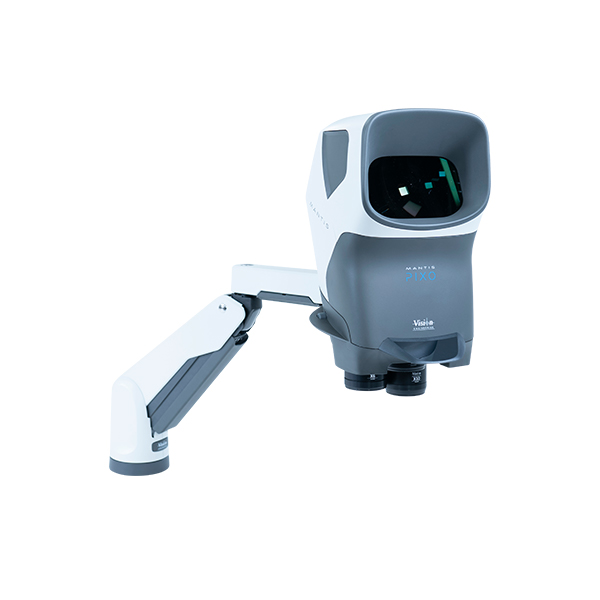

Other Improvements To The Mantis
Apart from the changes mentioned above, the new Mantis also includes many other features that offer a vast improvement over the Mantis Classic range. The other features are:
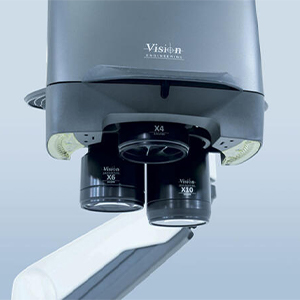

3-Lens Turret – The PIXO and ERGO heads now include a 3-lens turret. You can therefore attach 3 different objectives to the head at once, increasing the number of magnifications that you have at your disposal. This helps increase productivity.
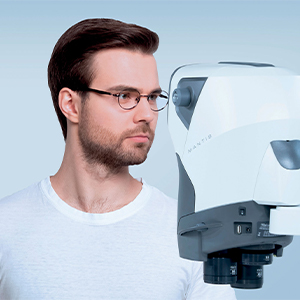

Eyepiece-less Design – This technology allows the image to be projected directly into the user’s eye. Subjects become easy to view for even extended periods. Also allows for use with eyewear and other PPE.
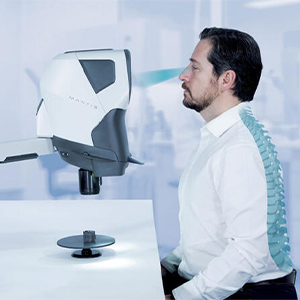

Raised Eye Point – The eyepoint of the Mantis systems has now been raised across the board on all 3 models. This helps again to improve the ergonomics of the user. The PIXO and ERGO have been raised by 21mm, whereas the IOTA has been raised by 31mm.
So, What Is Happening With The Mantis Classic Range?
The Mantis Classic range will stay in production for another 12 months. Support for the product will remain for many years to come.
This means that any spare parts can be replaced, new units can be picked up if you wish to standardise, and accessories can still be bought.
As the new iteration of the Mantis family is a completely new product in its own right, and not simply a system upgrade, all parts are unique. There is no compatibility between the old Mantis products or accessories, and the new Mantis systems.
This is mainly because each part of the PIXO, ERGO and IOTA has been further optimised.
In Summary
The new generation of the Mantis promises to be a game changer, whether you work in electronics, life sciences or many of the other industries the Mantis is perfectly suited to.
From the inclusion of DVO, to the streamlined stands, there are a whole host of changes and upgrades that make the 3rd Gen Mantis a step above anything else on the market.
If you are interested in talking more about the Mantis, or perhaps even a demo of the product, get in touch with our team by emailing to [email protected] or calling us up on 023 8065 0065.


